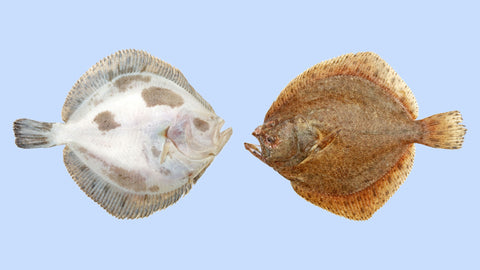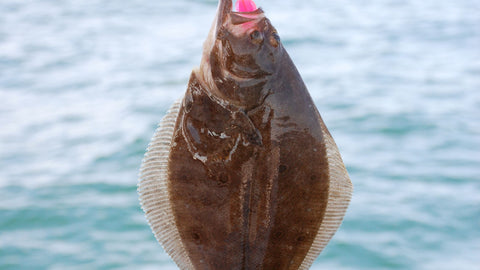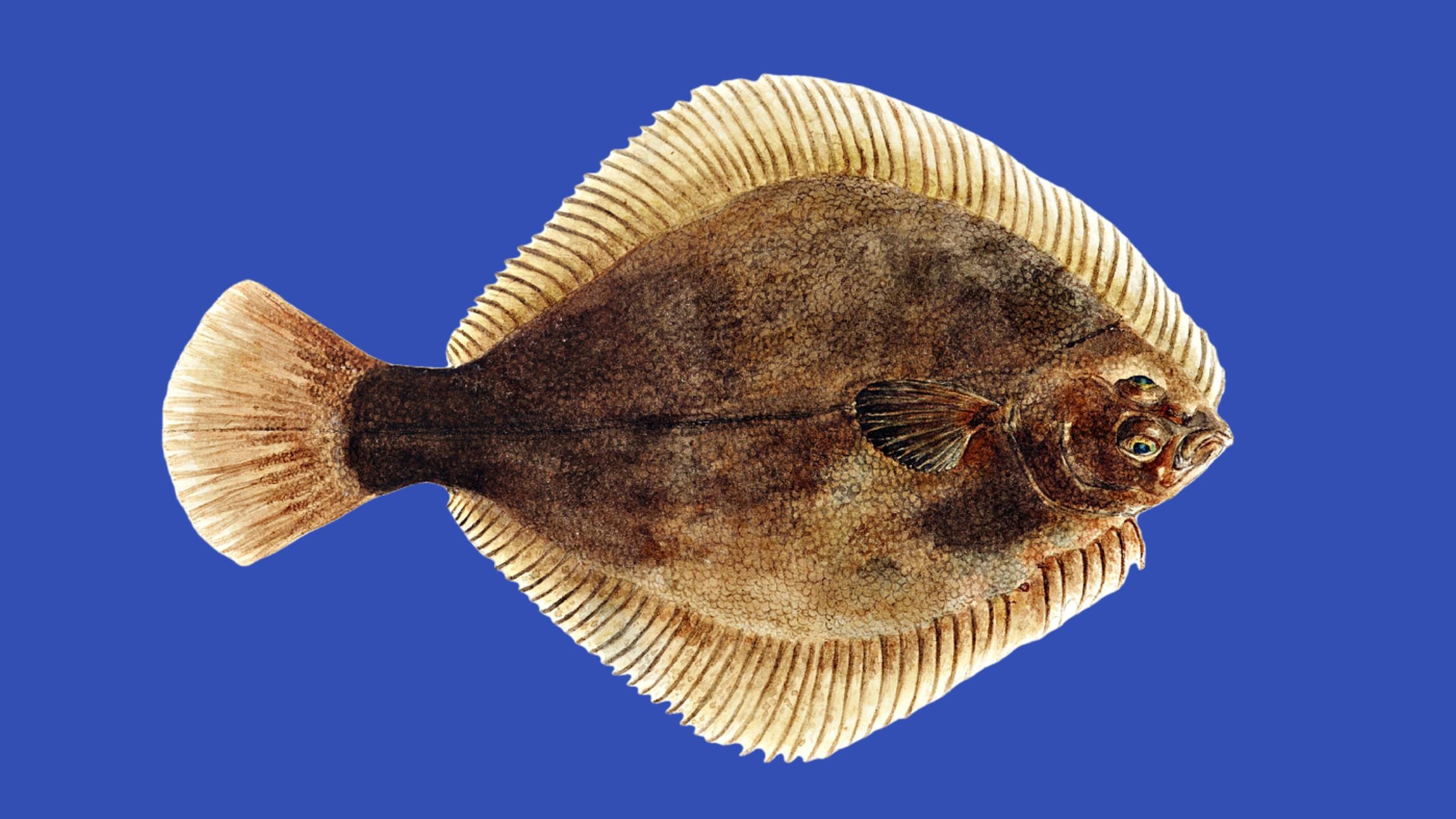Key takeaways
- A light to medium-action rod in the 6-7 foot range, paired with a 3500 series spinning reel, offers sensitivity to detect subtle flounder bites and the strength to set the hook.
- Use a Carolina rig for drifting. This setup allows your bait to drift naturally near the bottom, where flounders usually hang out, while minimizing snags.
- High tides are generally better for flounder fishing, and whether you're drifting or jigging, be patient for that definitive bite before setting your hook.
If you're keen on a fishing adventure that offers a mix of ease and challenge, you've gotta try your hand at flounder fishing. These flat, bottom-dwelling saltwater fish are popular targets among the fishing community, and for good reason. They're not too hard to find since they inhabit a broad range of waters, and they're pretty agreeable when it comes to what baits or lures they'll go for. Still, don't think it's all a walk in the park; mastering flounder fishing does take some know-how.
Table of Contents
Before you hit the water, let’s talk about the different kinds of flounder targeted by anglers, and learn a bit about their habits and favorite hangouts. We’ll then move on to some of the best flounder-catching techniques, from the perfect rig setups to the best choice of bait and lures.
Get to know the flounder

The flounder has some of the most fascinating characteristics in the aquatic kingdom. For starters, their flat, oval-shaped body is certainly a standout feature. Born with a symmetrical body, flounder also undergo an eye migration a few days after being born. You read that right: one of their eyes literally moves from one part of their body to another.
This leads to their unique, asymmetrical appearance. These bottom-dwellers have both eyes on the same side of their head, a trait that enables them to blend in with the ocean floor and excel at ambush hunting. Their camouflage game is next-level, as they can change color and patterns to match their surroundings. Most active at night, they like feasting on a diet that includes shrimp, crabs, and other fish.. Size-wise, they can grow quite large, reaching several feet depending on the species.
Depending on where you're casting your line, you might come across different types of flounder. According to NOAA Fisheries, the waters in the United States are teeming with a diverse array of flounder species. The lineup includes arrowtooth flounder, flathead sole, northeast multispecies (groundfish), petrale sole, rock sole, summer flounder, West Coast groundfish, windowpane flounder, winter flounder, witch flounder, yellowfin sole, and yellowtail flounder.
| Flounder Species in the U.S. |
|---|
| Arrowtooth Flounder |
| Flathead Sole |
| Northeast Multispecies (Groundfish) |
| Petrale Sole |
| Rock Sole |
| Summer Flounder |
| West Coast Groundfish |
| Windowpane Flounder |
| Winter Flounder |
| Witch Flounder |
| Yellowfin Sole |
| Yellowtail Flounder |
Each type has its own unique appeal and preferred habitat, adding a variety to the angler's experience. For example, the summer flounder, often referred to as fluke, are a hit along the Atlantic coast. If you're out fishing in the colder months, you're likely to bump into the winter flounder. Southern flounder are more common in the warmer Atlantic waters from Virginia to Texas. Meanwhile, Gulf Flounder call the Gulf of Mexico home. For those who favor the challenges of deep-water Atlantic fishing, American plaice and yellowtail flounder are the prime winter targets. And let's not forget the Pacific coast, where starry flounder reign as the local favorite.
Where to find flounder
To find flounder, it’s a good idea to scope out narrow chokepoints especially when there's some structure nearby, be it in the heart of spring, the warmth of summer, or the cool descent of fall. Flounders also have a knack for cozying up around wrecks, docks, rocks, and reefs.

Flounder can be found in both inshore and offshore locations. However, if you're just starting out, inshore locations like bays and estuaries are often easier to navigate. They also tend to love sandy or muddy bottoms where they can camouflage and wait for prey.
When to catch flounder
The high tide is generally your best bet when catching flounder, because that’s when they like to feed. Of course, these predatory fish aren’t aren't too picky about when they eat. If there's food, they'll be biting all day and all night. Usually, I find that the bite is hot just as the water is warming up early in the morning, or just after sunset.
How to catch flounder and best baits and lures for flounder fishing
Drifting bait at the bottom and jigging are two of the most popular techniques for catching flounder.
If you prefer drifting, you've got options when it comes to bait. For live bait, finger mullet, mud minnows, shrimp, peanut menhaden, baby bluefish, and striped killifish are all solid picks. If you're more into cut bait, squid and fish strips can also get the job done.
Now, let's talk rigging. A Carolina rig is the way to go for bottom-feeding fish like flounder. This setup includes a sliding sinker, a leader, and a hook. The beauty of the Carolina rig? It lets your bait drift in a natural manner while also reducing the odds you'll get snagged on the bottom. Some like to get more fancy with their rigs and add spreader bars, teasers, and spinner blades.
Looking for a fishing shirt for your next angling adventure? Check out these bestsellers!
When drifting, sandy or muddy bottoms are what you should be looking as flounder like to snack around these areas. Good spots to drift your bait include inlets, channels, and even around structures like jetties or docks.
Once you're all set up, let your bait drift with the current while keeping your fishing line taut. Flounder can be a bit sneaky, so patience is crucial. Wait for that definitive bite, give it a few seconds for the fish to fully take the bait, and then set the hook with confidence.
Another way to catch flounder is by jigging, and the key to doing that is to keep your offering active. Your jigging motions should be fast and aggressive to entice the fish. While working the jig, remember to keep it close to the bottom. A slow and steady retrieve while bouncing the jig along the bottom tends to be effective.
Don't hesitate to mix up your retrieval techniques; sometimes varying speeds and patterns can be the trick to getting a bite. Patience is a virtue in flounder fishing, as these fish can be elusive. Once you feel that bite, give it a few seconds to make sure the fish has fully taken the bait, (the same as when you’re drifting) and then set your hook.
Gear for catching flounder
You’re going to want a rod that's light to medium-action and falls in the 6 to 7-foot range. Pair it up with a 3500 series spinning reel, and you're golden. Don't overlook the need for a sensitive setup. It's key for detecting those subtle bites and for setting the hook just right.
Wrapping up
So there you have it, everything you need to be a flounder-catching machine. From understanding their unique biology and diverse species, to knowing the best baits, rigs, and techniques, you're now fully equipped to take on these flat, crafty critters. So grab your perfect rod and reel setup, hit those prime spots, and let the high tide roll in the good times and some great catches.
MOST READ NEWS:
How To Use Your Fishing Records to Catch More Fish
Track your fishing trips, analyze patterns, and refine your techniques with a fishing log to catch more fish on every outing!
Solo Fishing Safety Tips: Stay Safe and Enjoy the Outdoors
Learn essential solo fishing safety tips: gear checklist, boat safety, emergency preparedness, weather monitoring & fishing location scouting. Stay safe on the water.
Secrets to Winter Fly Fishing Success
Master winter fly fishing with expert tips on trout behavior, essential gear, and proven techniques. Learn the secrets to catching more fish in cold weather.
How Cold Water Changes Fish Behavior: Insights for Anglers
Explore how cold water affects fish behavior and fishing techniques, enhancing your angling success and strategy.
Is Tech Making Fishing Too Easy? Exploring Forward-Facing Sonar (FFS)
Learn about forward facing sonar in fishing - what it is, how it works, rules for tournaments, ethics, and tips for finding fish with this game-changing technology.
Plan Your Best Fishing Trip Yet this 2025: A Complete Guide
Plan your fishing trip this off-season. Learn to choose destinations, prep gear, pick bait, and trust Baitium for expert tools and tips!
15 Fishing Resolutions for 2025: Set Yourself Up for Success
Discover 15 essential fishing resolutions for 2025: tackle organization, gear maintenance, angling techniques, conservation tips, tournament prep, and fishing safety guidelines.


